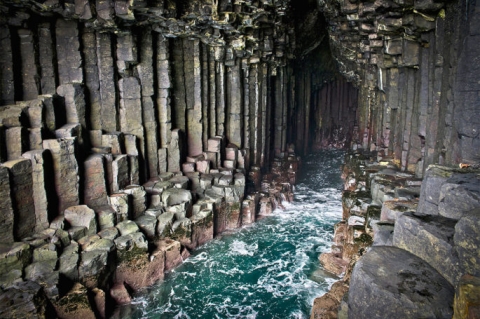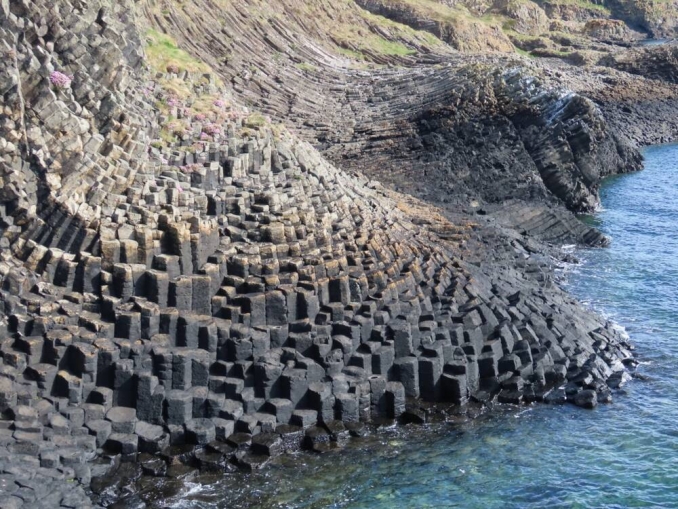Scottish island with ancient ritual significance and home to Fingal's Cave

Staffa (Scottish Gaelic: Stafa) is an island of the Inner Hebrides (Na h-Eileanan a-staigh) off the west coast of Scotland. Now uninhabited there is evidence that humans inhabited the Island as long as 3,800 years ago. Some years ago archaeologists working with the National Trust for Scotland discovered evidence for human activity during the Bronze Age on Staffa. Research continues to try and determine whether Staffa was home to a permanent settlement or visited as a place of ritual.
Although the island is small, just 0.6214 feet (1km) long by just over 984 feet (300m) at its widest point, the idea that it held a ritual significance is bolstered by its extraordinary appearance with sets of basalt pillars. Created some 60 million years ago, they were formed by the very same ancient lava flow that created the Giant’s Causeway in Ireland, which is just across the sea. A clear example of this is Fingal's Cave on Staffa. Fingal’s Cave is formed completely from hexagonal columns of basalt, shaped in neat six-sided pillars that make up its interior walls. To many in the ancient past and even now, it looks to have been built by hand and not a product of nature.
Estimates of its length vary between 227 feet (69 metres) and 270 feet (82 metres). The arched roof is said to reach between 66 feet (20 metres) and 72 feet (22 metres) above sea level. It is about 40 feet (12 metres) wide. As both the Giant's Causeway and Fingal's Cave are made of the same basalt columns, legend holds that they were the end pieces of a huge road built by the Irish giant Fionn mac Cumhaill. Fionn mac Cumhaill is a figure that also features in the mythologies of Scotland (Alba) and Isle of Man (Mannin).
He appears in a number of different forms and many geographical features in Ireland and beyond are attributed to Fionn. One of the legends involving Fionn mac Cumhaill is him as a giant. It was said that he built the Giant's Causeway as stepping-stones to reach Scotland in his conflict with the Scottish giant Benandonner his gigantic rival. This remarkable geographical feature is not the only result of the conflict between Fionn mac Cumhaill and Benandonner. Legend also has it that Fionn once scooped up a clump of Irish land and threw it towards his Scottish rival. The clump missed and landed in the middle of the Irish Sea. That clump of land became another Celtic nation, the Isle of Man (Manx Gaelic: Mannin). The area in Ireland from which clump of land was taken became Lough Neagh (Irish: Loch nEachach).
Image above Fingal's Cave courtesy of Visit Scotland.
Image below basalt rock formation on Staffa courtesy of National Trust for Scotland.






